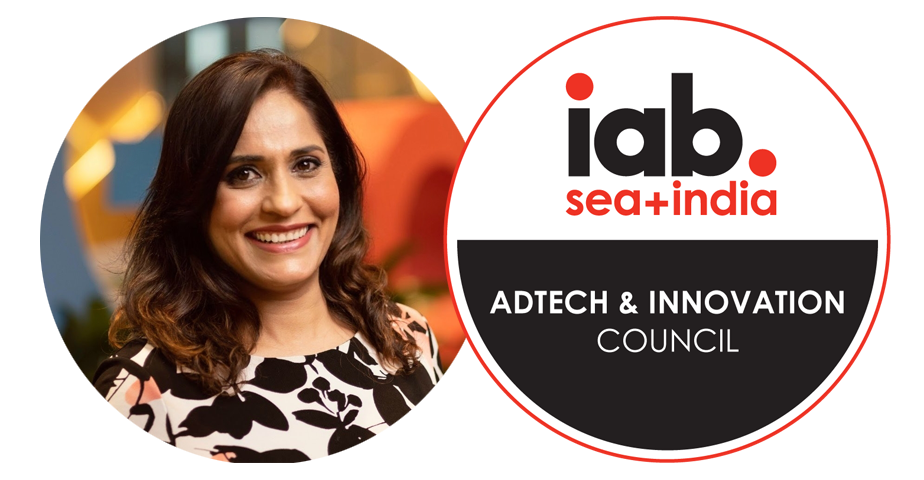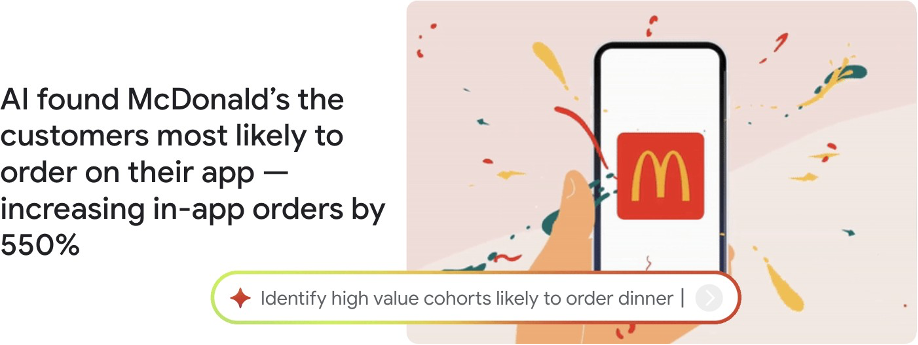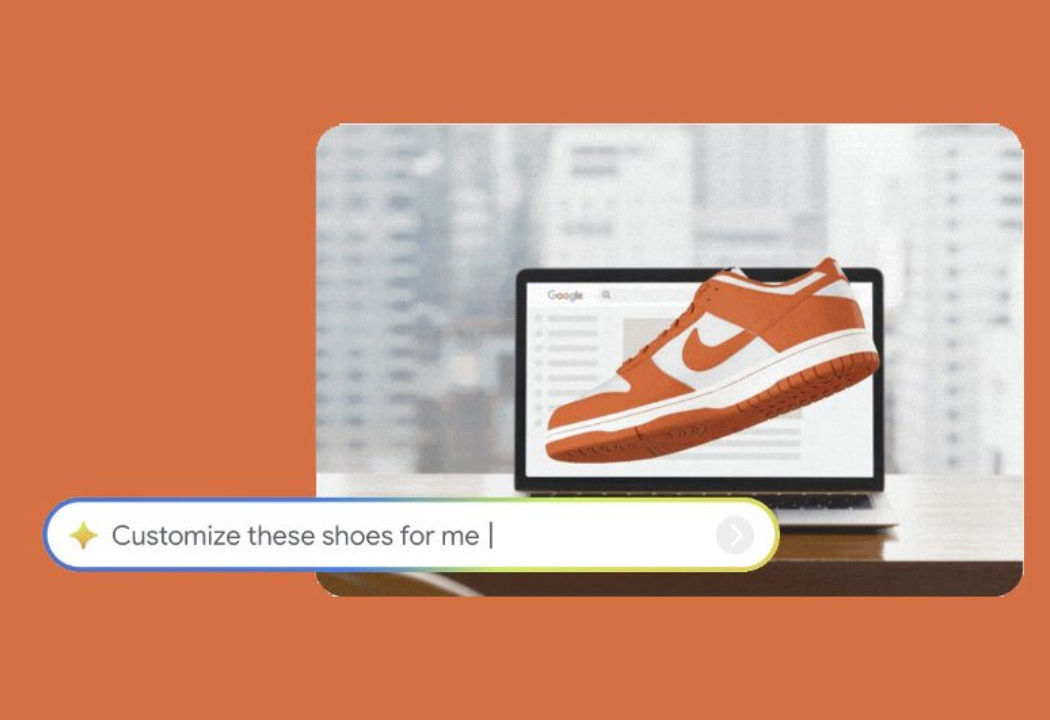
Author: Shabana Badami, Google | Member IAB SEA+India AdTech & Innovation Regional Council
Artificial intelligence (AI) has been thrust into the spotlight recently, with businesses and consumers alike wrapping their heads around this new technology. A huge platform shift is underway as AI is seen as the third major shift in technology — after the arrival of the internet, and then the move to mobile. Both of these shifts created enormous growth and opportunities, and so will AI. Simply put, AI is the most profound technology human-kind is working on today.
Given all the talk about AI, it is helpful to start with a basic understanding of what it is. In its most simple definition, AI is a non-human program or model that can complete sophisticated tasks, problem solving, and decision making. AI systems are trained on large amounts of data and can learn to perform tasks that would normally require human intelligence, such as recognizing objects in images, translating languages, and writing different kinds of creative content.

Generative AI is unlocking a world of creativity
It’s this generative ability — where an AI is given a prompt and makes something new based on it — that has been in the spotlight most recently, with the popularity of ChatGPT and Google Bard.
Example: You can ask the AI tool to give you six more high-protein vegan recipe ideas, or it can give you a jump start on that novel you’ve been meaning to write. You could ask it to draft a packing list for this weekend’s camping trip, or suggest the best ways to introduce your daughter to scuba diving.
Generative AI can help boost your productivity, accelerate your ideas and fuel your curiosity… and it’s already unlocking a world of creativity.
Analytical & Predictive AI is optimising the world around us.
The other thing AI does incredibly well is analyse and make predictions — It can find patterns and connections in large bodies of information that would be impossible for humans to identify.
It does this in the blink of an eye — analyzing the data and producing predictions in real-time.
You can see examples of this everywhere you look — from suggesting the most eco-friendly route, depending on traffic, to enhancing the impact of your advertising campaigns.
As AI continues to develop, it is likely to have an even greater impact on our lives.
But can we trust AI? As AI systems are starting to get deployed widely in our economy, ethical and legal issues are magnified. Large language models essentially reflect an approximation of the world and societal stereotypes – biases, discrimination, misinformation, fraud, factuality, and copyright amongst others.
It is essential to understand that AI, as a still-emerging technology, presents various and evolving complexities and risks. Therefore, it is imperative to pursue AI responsibly, which requires a collective effort. Researchers, developers, deployers, academics, civil society, governments, and users, including individuals, businesses, and other organizations, must work together to get AI right.
Ultimately, AI’s highest potential is in helping people, businesses and communities unlock completely new possibilities to achieve their full potential — and we can see AI is transforming marketing as well.
AI is a marketing Multiplier.
Your marketing expertise multiplied by AI, can drive profitable growth and results, help meet customers where they are, no matter how unpredictable their behaviors, and augment creativity to create new value and greater impact.
McKinsey looked at the effects of AI on marketing and found that 70% of companies that have adopted AI saw a revenue increase and nearly one-third saw cost reductions. And remember this is very early days, but we are already seeing a big impact.
Here are some ways of how AI can help marketers:
-
AI can help identify new opportunities for growth by analysing data and identifying trends.
-
AI can help personalise marketing messages and campaigns to reach the target audience more effectively.
-
AI can help automate tasks and processes, freeing up time to focus on more strategic initiatives.
-
AI can help measure and track the results of marketing campaigns, so you can see what’s working and what’s not.
But the key part of this equation is you. Ultimately, AI learns from your work, and you learn from AI.
One of the biggest barriers to using AI effectively in work is legacy thinking — like equating manual controls with the perception of greater control.
It is now almost unfeasible to manually change course quickly enough to keep pace with consumers and the market’s rapid pace. AI-powered products are easier to map to business objectives. They seamlessly connect data sources, and they deliver the outcomes needed.
Using AI isn’t just like swapping a slower car for a faster one — it’s like driving on a day when every light turns green when you approach. And that doesn’t mean replacing the human, you’re still very much in the driver’s seat, but working with the AI to reach your objectives faster and more easily.
What can AI do for your business?

First, AI can help you drive next level demand and growth. Take it from McDonald’s — they used their app ecommerce data and the AI to predict behaviors of their in-app audience — identifying those most likely to purchase. Armed with these valuable signals they were then able to find new customers far more effectively — increasing conversions by 550% while reducing cost per action.

Second, AI can help unleash your productivity. GetYourGuide, for example, used AI in its creative production process to personalise and scale creatives across all its digital channels. The results: production time was reduced by 94%, and 4.1M creatives were generated, which drove doubled click-through rates.

And finally, this technology will be truly transformational — allowing businesses to make not just incremental improvements, but giant leaps. Imagine how a simple sketch can be converted into a high-resolution image in seconds, or turned into a fully-rendered 3D model and dropped straight into your design software. Different kinds of media and inputs can be used as AI prompts and stimulus to open the door to incredible opportunities in design and personalisation.

And finally, let’s talk about what’s next…
Bold ways of working — those that enable us to bring the full potential of AI’s analytical, predictive and generative capabilities to bear — are only just coming into view. With these new, seemingly magical, powers there’s an open field of possibility ahead of us.
1. The first starts with getting the foundation right.
It begins with data.
High-quality data–especially consented, first-party data built from direct customer relationships– combined with value-centric measurement – is the bedrock to fueling AI and directing it to optimise for conversions that truly move the needle on business outcomes.
As third-party cookies are phased out, future-proofing and making your measurement strategy privacy-centric also ensures you’re getting a complete and accurate picture of performance to make confident optimisation decisions
And to gain deeper insights across your websites, and apps, we recommend a robust analytics tool. It can prepare you for the future of measurement because it can offer predictive and modeling capabilities.
Once you have your data foundation set, activate it using AI-powered campaigns to find untapped and incremental conversion opportunities across a full range of channels and inventory.
2. Then, activate the full funnel to find your most valuable customers
To get the most out of those customer connections across channels – make sure you’re showing relevant ads on as many placements and formats as possible by providing a diverse and wide range of creative assets.
Attracting customers who’ll bring the highest conversion value to a business is a marketer’s priority, especially when profit pressure rises. So predicting who your most valuable customers are and finding them is key.
To make the most of the AI-powered bid strategy, however, your marketing expertise is essential. You’ll need to first define values for the conversions that are worth the most to your business, to steer AI in the right direction to optimise toward them.
In particular, you should pick conversion goals that translate to actual value, such as profit or customer lifetime value, rather than intermediary metrics like sales volume.
The AI-powered bid strategy analyzes and intelligently predicts the value of a potential conversion every time a user searches for products or services you’re advertising, or engages with your ads on various channels. It then automatically adjusts your bids to maximise your return on them.
3. The final bucket is focused on mindset shifts.
AI requires a lot of change management with advertisers and agencies. It fundamentally changes how they’re used to managing campaigns. But the results and growth they can gain are worth it.
As far as the 3rd bucket: shifting to AI might be perceived as a risk, but it can be approached in a gradual manner. Implementing a culture of experimentation is one of the most important actions we can take to gradually progress their organisations and benefit from the full power of AI.
Remaining agile throughout the process is also essential to breaking common data, budget, and channel siloes that can limit AI’s ability to optimise and maximise performance. When it comes to budget and channel agility, specifically, staying nimble allows us to follow consumer demand – however and whenever it comes- we can capture incremental performance opportunities as they emerge. And this is all made possible by directly aligning marketing KPIs with business goals and partnering with your C-suite to quantify marketing’s impact to key financial metrics.
When you think about marketing as a profitable growth engine for your business, it allows you to take a more agile approach to your budget to unleash its full growth potential. Look at every additional dollar spent in terms of the ROI it delivers to your company, and think about how you can continue to use that next dollar to unlock further growth.
So, in conclusion, where are we?
Well, AI is here, and two things are true — you’re probably already using it, and there is likely more we can be doing with it.
The technology has the potential to provide businesses with a powerful competitive advantage — but it needs to be guided, and that guidance comes from you and your expertise. With rich inputs like these, AI systems can learn and improve over time — meaning the sooner you lean into it, the greater the performance you’ll unlock.
Optimising AI is set to become a discipline in its own right, and businesses should consider creating a center of excellence within their organisation to help share and scale the learnings.
Consumers are using AI, and their expectations are rising rapidly. They want answers faster than instantly, and they want a wide range of choices. Once they have made a choice, they want more of what they have chosen. AI can help businesses keep up with this rate of change and connect with customers more quickly and at scale.
Lastly, the proof of the pudding — this industry discussion summary was written with the help of AI.
Now is the time for businesses of all sizes to start thinking about their AI marketing strategy. We’re excited about what’s possible when we combine our knowledge and expertise with the power of AI.

